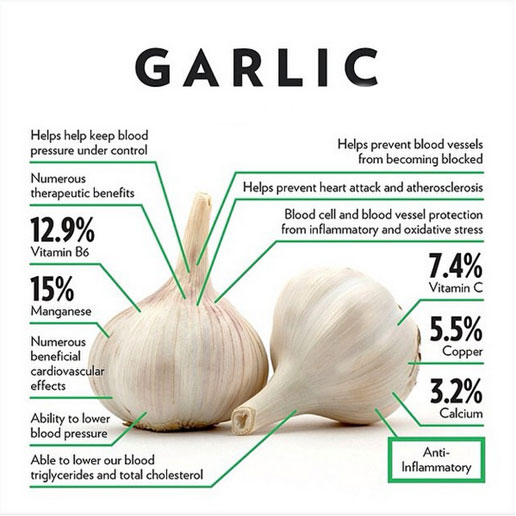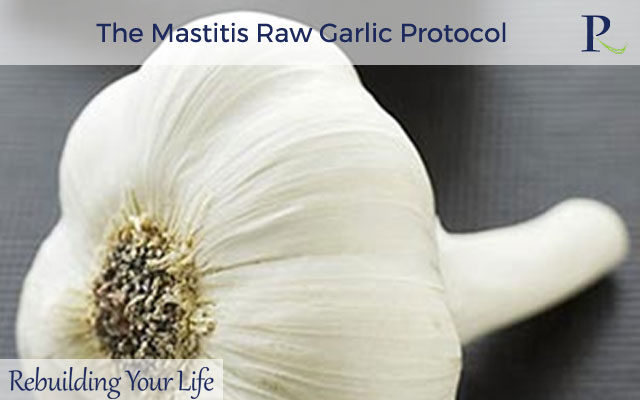Country: Italy
Continent: Europe
Treatment for: Mastitis
Secret ingredient: Raw garlic (Allium sativum), bulb
Mastitis is inflammation of one or both mammary glands inside the breast and, although it’s not natural, it occurs in approximately 10-30% of lactating breastfeeding women. It generally appears in the first three months of breastfeeding but may show up as much as two years later and is indicated by a hard sore spot inside the breast.
There are two types to be on the lookout for.
- Non-infectious: This happens when a milk duct becomes blocked and can lead to infection. Milk may be thick, stringy or lumpy.
- Infectious: This is caused by bacteria and should be treated immediately.
If you are experiencing any of the following symptoms in a breast, you may be suffering from mastitis.
- Redness
- Pain when touched
- Area feels hot when touched
- Burning sensation all or some of the time
- Chills or shivering
- Fever or elevated body temperature
- Fatigue beyond what you were normally feeling due to pregnancy and delivery
The general conventional prescription for an infected mammary gland is antibiotics, however, in this protocol, we will use the natural antibiotic properties of raw garlic to avoid passing chemical antibiotics to the breastfeeding baby.
You may continue to breastfeed either way, but I prefer to avoid giving infants antibiotics as much as possible, for as long as possible.
How It Works
When I visited Tuscany for the first time, I fell in love with the natural countryside, the grape and olive vineyards, and other local wonders that I was treated to by my host, Guy Giotti, such as a village hunt for wild boars (which are a threat to sheep – the village men managed to kill 8 boars that day, all of which were eaten or sold to local restaurants), and a visit to a local cashmere goat farm, one of the few left in existence.
One of the most memorable things for me, however, was when Guy told me, on the fourth morning of my stay over breakfast, that we were going out to pick garlic. I’ve always been a natural foods advocate, particularly as they relate to healing and health, and my family has always grown plenty of it, but I’d never picked wild food. There’s something immensely pleasurable about foraging for food, and garlic apparently grows wild all over the Tuscany region.
Garlic (Allium sativum) has been used as a culinary spice for ages, but it wasn’t until the 1920s that researchers at Sandoz Parmaceuticals in Switzerland isolated the antibiotic constituent. Its active properties make it a natural broad-spectrum antibiotic whose properties have been confirmed in dozens of animal and human studies. It contains the sulfur compound allicin, which gives it its distinctive pungent taste and smell.
In addition to allicin’s antibacterial properties, several studies propose that garlic has an affect on blood platelet clumping (sticking together), acting as an anticoagulant, and it’s believed that it may have the same effect on clogged mammary glands, thereby releasing coagulated milk as it disinfects.
My 10-day Mastitis Protocol uses raw garlic to naturally clear mild infection, and you can continue breastfeeding during the protocol without the added risk of creating antibiotic resistant strains.
Remember that natural food remedies are mild and sometimes take time to affect a condition. If you are experiencing high fever or fever that’s not alleviated within 24 hours, please see a doctor right away.
The Mastitis Raw Garlic Protocol
The taste of raw garlic does not appeal to everyone, but cooking or drying garlic negates allicin’s antibacterial properties. Capsules do not preserve the full antibacterial, antiviral and antifungal activity, and “odor free” garlic has had the allicin removed, rendering it useless for purposes of the Mastitis Raw Garlic Protocol.
You will need:
- Fresh raw garlic – enough for between 3-5 cloves per day
- Fresh or dried rosemary for compresses
- Clean towels for compresses
- 500-1000 mg whole food Vitamin C capsules
Use compresses:
Compresses will reduce inflammation and pain in the affected area. Apply compresses for 10 days.
- Before and after breastfeeding, apply a cold compress to the affected breast.
- After applying a compress, massage the breast toward the nipple to help loosen any plugged areas.
To make a compress:
Add 5 teaspoons fresh or dried rosemary to a quart of boiling water. Cover, remove from heat and let the herb steep for 10 minutes. Strain and place in refrigerator. When you’re ready to use it, soak a clean towel in the infusion, wring excess rosemary water back into the jug, and apply the compress for 10-15 minutes.
Take raw garlic:
For 10 days, swallow at least 2-3 raw garlic cloves each day, more if possible – up to 5 cloves. You can swallow them whole or finely chopped, or you can chew them if you like the taste of raw garlic.
- You can also take your garlic in salads or smoothies, or swallow it with a glass of orange juice just like you would take a pill.
- Try mixing 10 cloves of garlic and 16 ounces of carrot juice or pineapple juice in a blender and drink 4 ounces every two hours.
Take Vitamin C:
If you are accustomed to taking vitamin C every day:
- Days 1-3 – Take 1000 mg once a day (or divide it to 500 mg twice a day)
- Days 4-6 – Increase the dosage to 1000 mg twice a day
- Days 7-8 – Increase the dosage to 2000 mg twice a day
- Days 9-10 – Increase dosage to 3000 mg twice a day
For those who are not currently taking at least 500 mg vitamin C every day:
- Days 1-2 – Take 500 mg once a day
- Days 3-4 – Take 500 mg twice a day
- Days 5-6 – Increase to 1000 mg in the morning and 500 mg in the evening
- Days 7-8 – Take 1000 mg twice a day
- Days 9-10 – Increase to 1500 mg twice a day
If you begin to experience diarrhea, skip a day, then reduce the dosage to 500 mg once a day.
Boosters/Substitutes/Exceptions
- All members of the lilliaceae family – shallots, onions, leeks, chives, garlic, and spring onions contain the same antibacterial properties. If you can’t stand the taste of garlic, try substituting one of the others. Remember that they must be eaten raw or the antibiotic properties will be lost.
- Try making a paste from raw garlic. Spread it on crusty pieces of bread or blend into mashed potatoes (do not cook garlic paste). Recipe: Mash one head of raw garlic and mix with 3 Tbsp finely minced parsley, 1 tsp finely minced fresh oregano (or dried), and 1 Tbsp extra virgin olive oil. Add 1/2 cup plain yogurt and 3 Tbsp grated Parmesan cheese and mix well. Store refrigerated.
- Or simply mash garlic into softened butter and spread on toast. Store refrigerated.
- If your nipples are itchy, you may have thrush, another common ailment associated with breastfeeding, and one which takes several days to clear up. Thrush is a yeast (fungal) infection. You should see your doctor, but for immediate relief from itching, mix 2 Tbsp white vinegar with 8 ounces water. Dip a cotton ball into the water and allow liquid to run over the nipple until itching stops.
- If you stomach becomes upset from too much raw garlic at one time, take it with food (salads, orange juice, chopped into vegetables)
Did you know?
- Chewing on fresh parsley or cardamom seeds will alleviate funky garlic breath.
- The English word “mastitis” comes from the Greek word mastos meaning “breasts”, and the suffix “-itis” which comes from Modern Latin meaning “inflammation”.
- Garlic is also an excellent source of vitamin B6, and a very good source of manganese, selenium and vitamin C. It also contains good amounts of phosphorous, calcium, potassium, iron, and copper.
- You can remove garlic’s fragrance from your fingers by rubbing them with toothpaste and rinsing.
- Researchers at the Monell Chemical Senses Center in Philadelphia found that mothers who ate just 1.5 grams of garlic extract two hours before nursing developed an odor in their milk that prompted infants to suck longer, potentially ingesting more milk. In the majority of cases, babies experienced no abdominal cramps or other problems associated with spicy foods.
- Garlic will repel insects including mosquitoes, mites and fleas. Apparently animals love it, so throw some into your pet’s food!








